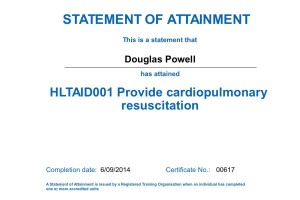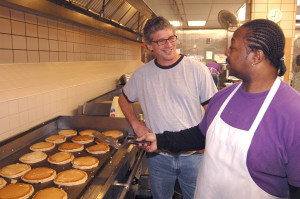Parenting and preparing food are about the only two activities that do not require some kind of certification in Western countries. To coach little girls playing ice hockey in Canada requires 16 hours of training. To coach kids on a travel team requires an additional 24 hours of training. Anyone who serves, prepares or handles food, in a restaurant, nursing home, day care center, supermarket or local market should have some basic food safety training.
 Not the case in Phoenix, where Judy Hedding of About.com Travel writes, I don’t recall ever seeing such extensive comments by an inspector about the total lack of knowledge of food operations as I read in the report of our worst offender for last week. Eat sushi there? I don’t think so. Eat anything there? I think not. I have to wonder why there is not such score as F.
Not the case in Phoenix, where Judy Hedding of About.com Travel writes, I don’t recall ever seeing such extensive comments by an inspector about the total lack of knowledge of food operations as I read in the report of our worst offender for last week. Eat sushi there? I don’t think so. Eat anything there? I think not. I have to wonder why there is not such score as F.
The following list represents those restaurants (not schools, caterers, corporate cafeterias, bakeries or other food processing businesses) that had three or more Priority Violations — those that are considered a serious risk for foodborne illness — during their last inspection. Three or more Priority Violations means that the grade for that inspection is a D (there are no F grades). The worst are at the top of the list. A restaurant that had that many Priority Violations noted would be one that I’d avoid, at least until they had subsequent inspections showing more understanding of safe food preparation standards and concern for their patrons. I also include establishments where their license was immediately suspended by the inspector.
Typically, this involves an equipment failure that can’t be corrected immediately. Examples might be refrigeration units that don’t cool enough, plumbing problems, or availability of clean water. Their license might be reinstated, even later that same day, if they correct the problems noted. Restaurants reported here are located in communities all over Maricopa County. That means not only Phoenix, but also Scottsdale; the cities and towns in the West Valley like Glendale, Peoria, Surprise; the cities and towns in the East Valley like Tempe, Chandler and Mesa; as well as other county locations. County inspectors may or may not inspect restaurants in every part of the county every week.
After you peruse the worst, please take a look at the many Phoenix area restaurants that achieved the best inspections during the week ending January 18, 2015. Those are arranged by zip code, for your convenience. They deserve our support and our business. Restaurants With the Worst Health Department Inspection Results For Week Ending January 18, 2015
| Business Name | Address | City | Zip Code | Priority Violation |
| Schlotzsky’s | 4445 E Thomas Rd | Phoenix | 85018 | Immediate Suspension |
| Eastwind Restaurant | 13637 N Tatum Blvd | Phoenix | 85032 | 9 |
| La 15 Y Salsas Restaurant | 1507 W Hatcher Rd | Phoenix | 85021 | 6 |
| Dobson Ranch Bar & Grill | 1644 S Dobson Rd | Mesa | 85202 | 6 |
| Nanay’s | 2390 N Alma School Rd | Chandler | 85224 | 6 |
| Abuelo’s Mexican Food Embassy | 16092 Arrowhead Ftns Ctr Dr | Peoria | 85381 | 4 |
| Rosa’s Mexican Grill | 328 E University Dr | Mesa | 85201 | 4 |
| Cristal Bakery & Mexican Food | 6402 W Glendale Ave | Glendale | 85303 | 4 |
| Thai Spices | 66 S Dobson Rd | Mesa | 85202 | 4 |
| Sonic Drive In Mesa | 618 W Southern Ave | Mesa | 85210 | 3 |
| Flancer’s Cafe | 610 N Gilbert Rd | Gilbert | 85223 | 3 |
| Tropical Smoothie Cafe | 13375 W Mcdowell Rd | Goodyear | 85338 | 3 |
| Waffle House | 1801 W Baseline Rd | Guadalupe | 85283 | 3 |
| Culver’s | 630 E Southern Ave | Tempe | 85282 | 3 |
 You can see the inspection history of any place that serves or handles food at the Maricopa County website. If you are interested in Apache Junction, Gold Canyon, Superior, Florence, Maricopa or Casa Grande, you can find restaurant reports for Pinal County, too. Restaurant information provided by the Maricopa County Environmental Health Services Division, used with permission. The image on this page is generic, and not associated with any of the restaurants mentioned here.
You can see the inspection history of any place that serves or handles food at the Maricopa County website. If you are interested in Apache Junction, Gold Canyon, Superior, Florence, Maricopa or Casa Grande, you can find restaurant reports for Pinal County, too. Restaurant information provided by the Maricopa County Environmental Health Services Division, used with permission. The image on this page is generic, and not associated with any of the restaurants mentioned here.













